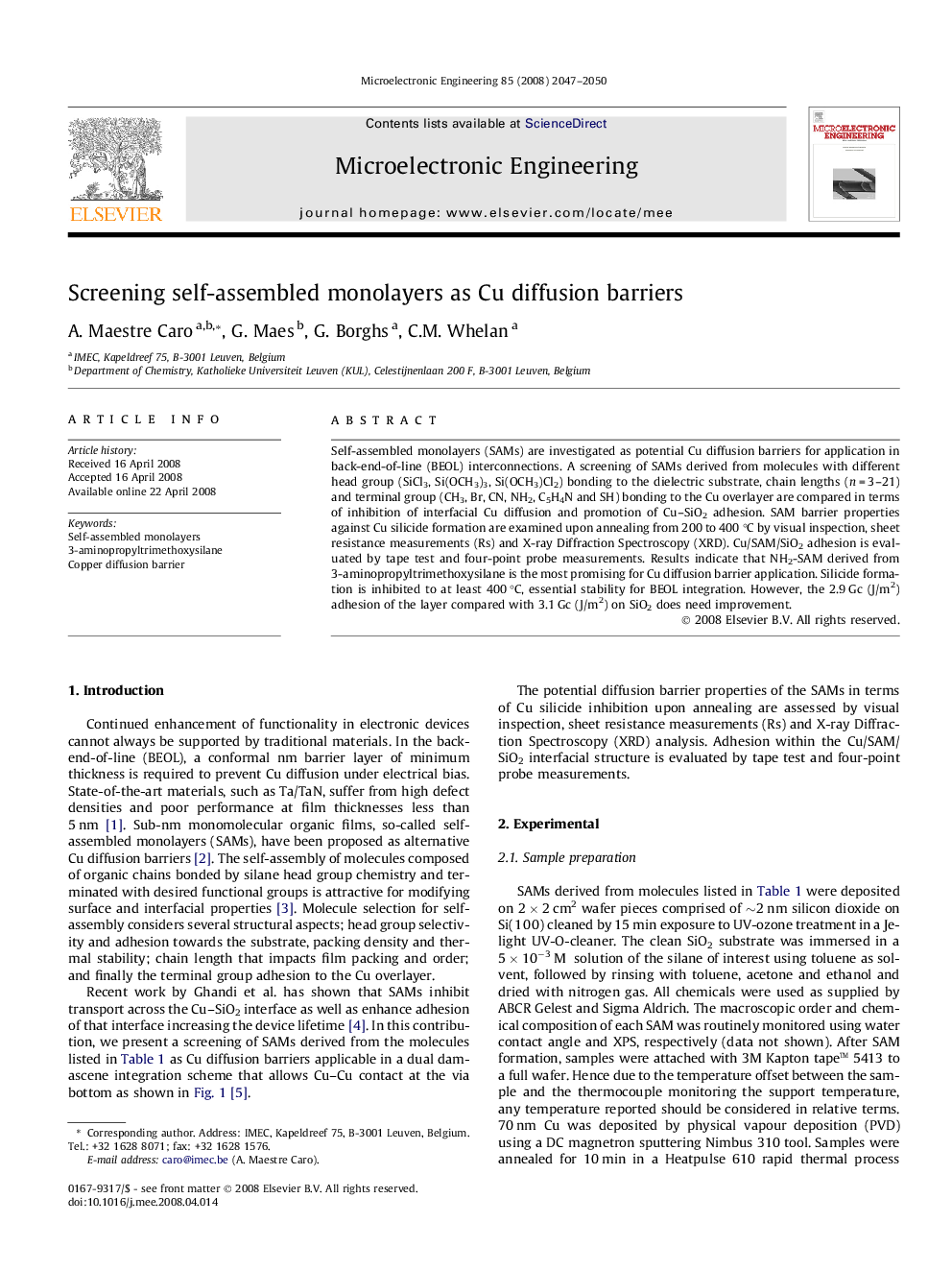| Article ID | Journal | Published Year | Pages | File Type |
|---|---|---|---|---|
| 540679 | Microelectronic Engineering | 2008 | 4 Pages |
Self-assembled monolayers (SAMs) are investigated as potential Cu diffusion barriers for application in back-end-of-line (BEOL) interconnections. A screening of SAMs derived from molecules with different head group (SiCl3, Si(OCH3)3, Si(OCH3)Cl2) bonding to the dielectric substrate, chain lengths (n = 3–21) and terminal group (CH3, Br, CN, NH2, C5H4N and SH) bonding to the Cu overlayer are compared in terms of inhibition of interfacial Cu diffusion and promotion of Cu–SiO2 adhesion. SAM barrier properties against Cu silicide formation are examined upon annealing from 200 to 400 °C by visual inspection, sheet resistance measurements (Rs) and X-ray Diffraction Spectroscopy (XRD). Cu/SAM/SiO2 adhesion is evaluated by tape test and four-point probe measurements. Results indicate that NH2-SAM derived from 3-aminopropyltrimethoxysilane is the most promising for Cu diffusion barrier application. Silicide formation is inhibited to at least 400 °C, essential stability for BEOL integration. However, the 2.9 Gc (J/m2) adhesion of the layer compared with 3.1 Gc (J/m2) on SiO2 does need improvement.
